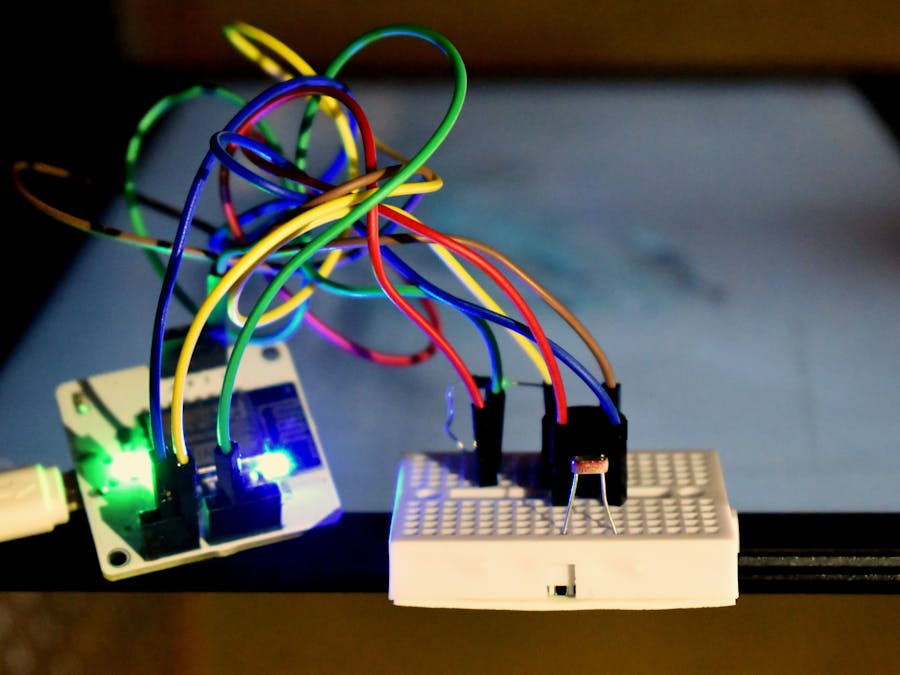Today's World is all about technology.
We can't deny the fact that technology improved our lives.It helped us almost in every field.
presently, most of the students, professionals and even small kids are using smart phones and computers. It is known to the world that these types of devices emits radiation which causes eye problems.One of the eye problems is Dark circles under the eyes, caused due to staring at a brighter screen in night(Darkness).
To avoid these kinds of problems, most of the smartphones came with built-in Light sensor which measures the amount of light present and decreases the brightness.that's a cool feature.but what about the computers, which dont have sensors to sense and control the brightness of screen.
well, that's not a big problem.in the world of IoT we can solve every problem.
it is found that most of the laptop users manually change the brightness of their laptops with change in light.Here, comes the LDR.we can solve this issue with the use of LDR.This is one of the applications of LDR.
This project with the help of Bolt IoT wifi module will control the brightness of your laptop screen and notify you whenever there is a change in brightness level with the help of buzzer.
Thanks to Bolt Iot for developing such an amazing Python Library.
It is very easy to make this project.So, Let's get started :)
DEMONSTRATION











_uqxQh2ZNLu.png)
_gGbrnEqTsl.png)
_OU2l17i0Qh.png)





Comments